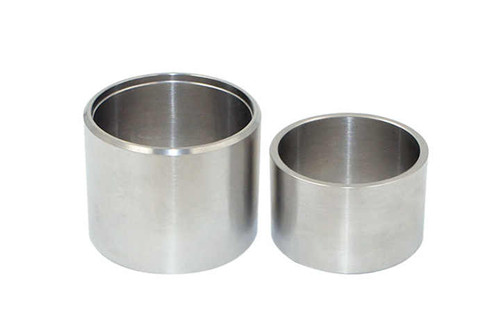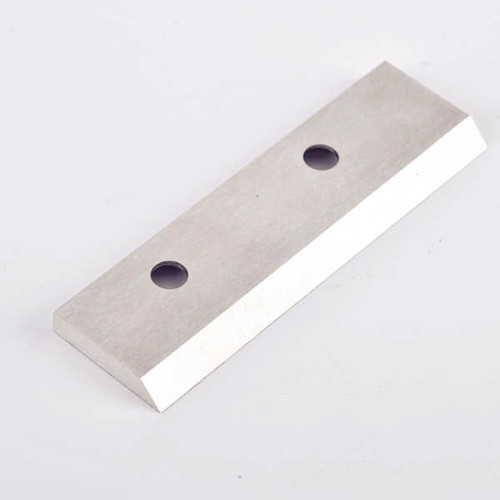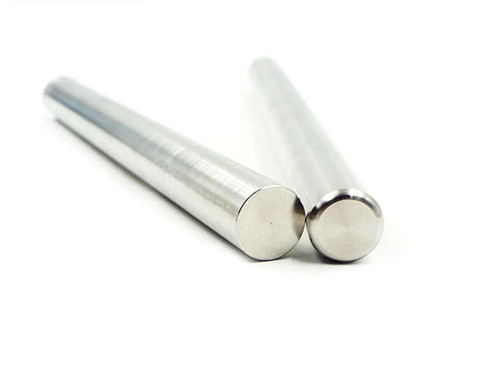The role of cobalt and tungsten in Stellite alloy
Stellite alloy, a representative example of cobalt-based high-temperature cemented carbide, holds an irreplaceable position in extreme operating conditions in sectors such as aerospace, energy, and chemical engineering, thanks to its exceptional combined resistance to high temperatures, wear, and impact. Cobalt (Co) and tungsten (W), the core components of this alloy system, form a “matrix support – reinforcement phase synergy” performance framework through precise compositional design and microstructural control. Their interaction and synergistic effects are key to the alloy’s breakthrough performance.
I. Cobalt: The Alloy’s Matrix Core and Performance Cornerstone
Cobalt, as the matrix element of Stellite alloys, typically accounts for 40% to 70% (e.g., 60% to 70% in Stellite 6K). It is a key component that determines the alloy’s fundamental properties and microstructural stability, playing three key roles:
1.Building a high-temperature stable crystal structure framework
Pure cobalt transforms from a hexagonal close-packed (hcp) structure to a face-centered cubic (fcc) structure above 417°C. This structural transition can easily lead to fluctuations in material properties. In the Stellite alloy system, the cobalt matrix, through synergistic interaction with elements such as nickel, maintains a stable fcc structure from room temperature to the melting point, providing a uniform and stable microstructural foundation for the alloy. This crystal structure imparts strong atomic bonding to the cobalt matrix, enabling it to maintain structural integrity even at temperatures of 900°C, preventing material failure due to softening at high temperatures.

2.Providing Critical Toughness and Impact Resistance
The low stacking fault energy of the cobalt matrix gives it excellent plastic deformation capabilities, effectively balancing the brittleness risk posed by the hard phases in the alloy. Experimental data shows that the impact toughness of typical Stellite alloys can reach ≥2.5%, enabling them to withstand transient impact loads (such as the intermittent cutting conditions of industrial cutting tools). This toughness supports the alloy’s ability to overcome the “hard and brittle” material dilemma, ensuring it resists cracking under high stresses, creating a “buffered skeleton” for the alloy that combines strength and elasticity.
3.Strengthening the Alloy’s Hot Corrosion Resistance
The melting point of cobalt sulfides (for example, the Co-Co₄S₃ eutectic is 877°C) is much higher than that of nickel sulfides (for example, the Ni-Ni₃S₂ eutectic is only 645°C), and the diffusion rate of sulfur in cobalt is significantly lower. This characteristic enables Stellite alloy to exhibit superior hot corrosion resistance compared to nickel-based alloys in corrosive environments such as sulfur-containing gas and oil production. Combined with the Cr₂O₃ oxide film formed by chromium, it provides a dual barrier against corrosive media.
II. Tungsten: The Alloy’s Core Strengthening and Performance Enhancer
Tungsten, a key strengthening element in Stellite alloys, is typically added in amounts between 3% and 25%. Through a dual mechanism of solid solution strengthening and second-phase strengthening, it significantly enhances the alloy’s high-temperature performance and wear resistance. Its effects can be summarized in three dimensions:
1.Achieving Efficient Solid Solution Strengthening and High-Temperature Strength Enhancement
Due to its large atomic radius and high melting point (pure tungsten melts at 3422°C), tungsten atoms, when dissolved in a cobalt matrix, create strong lattice distortion, significantly increasing the matrix’s recrystallization temperature and high-temperature strength. This strengthening effect enables the alloy to maintain stable mechanical properties even at extremely high temperatures. For example, Stellite 21 alloy maintains a hardness exceeding 70% of its room temperature value (HV ≥ 300) at 800°C, far exceeding that of conventional steels. Furthermore, the addition of tungsten effectively improves the alloy’s creep resistance. At 850°C/100 MPa, the steady-state creep rate of a typical Stellite alloy can be less than 1×10⁻⁸/s.

2.Formation of High-Hardness Carbide Strengthening Phases
In carbon-containing Stellite alloy systems, tungsten preferentially combines with carbon to form high-hardness carbides such as WC. These carbides have a microhardness of 1500–2200 HV and are uniformly dispersed within the cobalt matrix. These hard phases act as a “wear-resistant skeleton” within the alloy, effectively resisting abrasive and adhesive wear, resulting in an alloy with wear resistance 5–8 times that of tool steel. Research has shown that the volume fraction and morphology of carbides are crucial to wear resistance. When the carbide volume fraction reaches 25%-30%, the alloy can meet the requirements of high-stress abrasive wear scenarios.
3.Optimizing the Alloy’s Hot Hardness and Service Life
Hot hardness (the ability to maintain hardness at high temperatures) is a core indicator of high-temperature material performance. Tungsten significantly improves the alloy’s hot hardness by inhibiting the high-temperature aggregation and growth of carbides. The temperature at which carbides in Stellite alloys re-dissolve into the matrix can reach up to 1100°C, far higher than the strengthening phase in nickel-based alloys. This results in a slower decline in strength as the temperature rises. In components such as gas turbine nozzles, tungsten-containing Stellite alloys can withstand 950°C gas erosion and have a service life exceeding 40,000 hours.
III. Cobalt and Tungsten Synergy: The Core Logic of Balanced Performance
The performance advantages of Stellite alloys are not the result of the effects of a single element, but rather the synergistic effect of the cobalt-based matrix and the tungsten-based reinforcement phase. This core synergy can be summarized as a complementary mechanism of “tough matrix load-bearing – reinforcement phase synergy”:
1.Balanced Control of Hardness and Toughness
The excellent toughness of the cobalt matrix provides a reliable load-bearing foundation for the high-hardness carbides, preventing the hard phase from spalling due to lack of support under load. The tungsten carbides, on the other hand, increase the alloy’s hardness to the range of HRC 40-60 without significantly sacrificing toughness. This balance enables alloys like Stellite 6K to achieve hardnesses of HRC 40-48 while maintaining an impact toughness of ≥2.5%, making them ideally suited for complex high-temperature and high-stress operating conditions.
2.Dual Guarantee of High-Temperature Stability
The face-centered cubic structural stability of the cobalt matrix and the high melting point of tungsten synergize to ensure stable performance within the 750-1100°C range. The cobalt matrix inhibits structural phase transformations at high temperatures, while tungsten delays softening through solid solution strengthening and carbide stabilization. Together, these two elements enable the alloy to maintain superior hot corrosion resistance to nickel-based alloys at temperatures above 1000°C.
3.Combined Wear and Corrosion Resistance
The high hardness of tungsten-based carbides complements the corrosion resistance of the cobalt matrix, allowing the alloy to withstand both wear and corrosion. In the downhole environment of oil drilling, this synergistic effect enables drill bit bearings made of Stellite alloy to resist both abrasive wear from rock particles and corrosion from sulfur-containing media, extending their service life by 5-10 times compared to traditional materials.

IV. Core Application Scenarios: Industrial Demonstration of Performance Advantages
The synergistic effect of cobalt and tungsten endows Stellite alloy with comprehensive properties, making it irreplaceable in extreme operating conditions:
Aerospace: Cobalt-tungsten-containing Stellite 6B alloy, used in turbine blade seals, can withstand 1000°C high-temperature airflow erosion. Engine combustion chamber liners using this alloy can withstand over 800 thermal shock cycles (ΔT = 1000°C → 25°C).
Energy Extraction: Oil drilling valve sealing surfaces made of Stellite 6K alloy exhibit a corrosion rate of less than 0.03mm/year in media containing 5% H₂S, while also resisting abrasive wear in drilling fluids.
Chemical Equipment: In sulfuric acid reactors, Stellite alloy valve sealing surfaces can withstand corrosion in 98% concentrated sulfuric acid with a leakage rate of less than 1ppm/year. This performance stems from the synergistic effect of the corrosion-resistant cobalt matrix and the wear-resistant tungsten reinforcement phase. Conclusion
Cobalt and tungsten form a precise functional complementarity and synergistic performance in Stellite alloys: Cobalt, as the matrix, creates a stable structural framework and foundation for toughness, like the alloy’s “skeleton and veins”; tungsten, through solid solution and carbide strengthening, achieves breakthroughs in high-temperature performance and wear resistance, like the alloy’s “armor and bones.” This synergistic effect overcomes the material’s inherent performance constraints of “hardness-toughness” and “high-temperature-corrosion resistance,” making Stellite a key material for extreme operating conditions. With the advancement of metallurgical technology, through optimized cobalt-tungsten ratios and microstructures, the performance boundaries of Stellite alloys continue to expand, providing core material support for advancements in high-end manufacturing.
